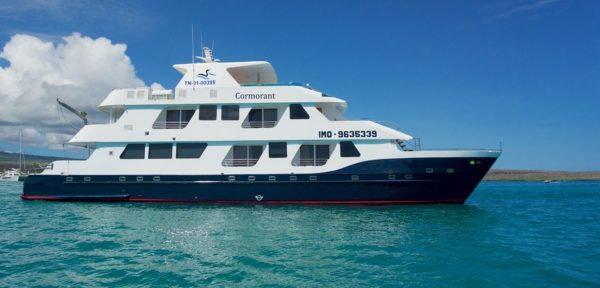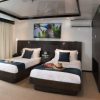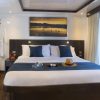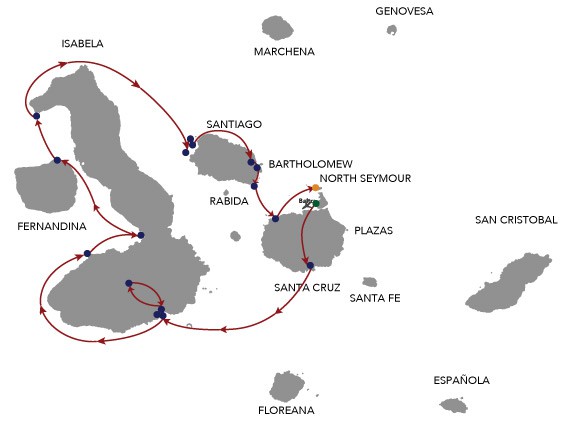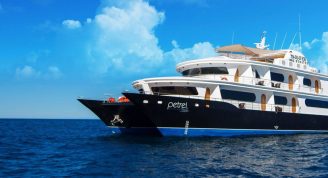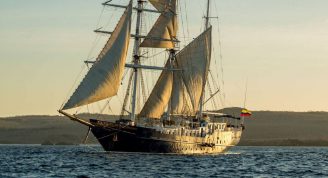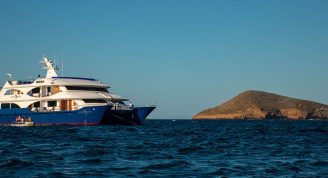Description
Our complete itineraries are developed for the benefit of our passengers, who will have the opportunity to combine hiking, snorkeling, beach and kayaking; our professional guides will introduce you to the most relevant sites on each island.
Trip Name
Galapagos Cruise - 8 Days B (Cormorant)
Days
8
Overview
Vessel Type: Power Motor Catamaran
Length: 33 metres
Passenger Capacity: 16
Built: 2011
This beautiful 16 passenger vessel has been recently remodeled offering to your clients the following features:
All cabins and suites with panoramic ceiling to floor windows and private balconies
Beautiful dinning area with panoramic windows
Renovated sun deck with a comfortable al fresco dining and an 8 passenger jacuzzi on the stern area
2 comfortable suites with a spacious lounge
4 interconnected cabins on the upper deck


